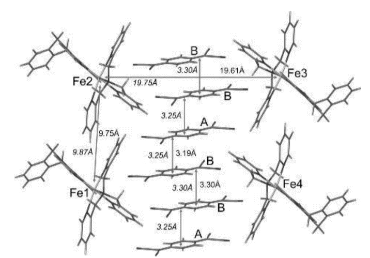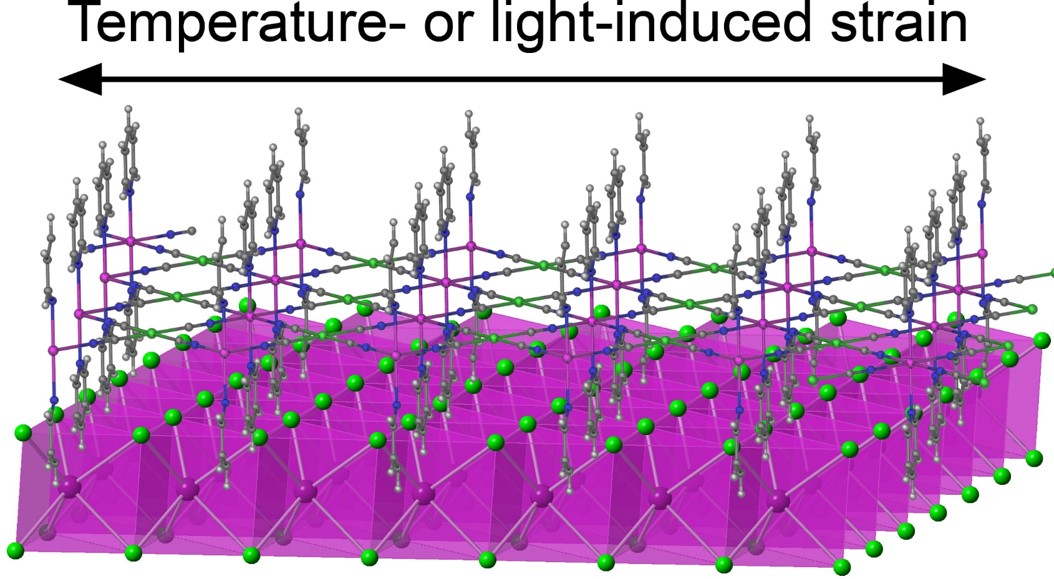Molecular Spintronics and Spinterfaces
Conductivity, ferroelectricity and magnetism
The goal of this far-reaching project is to combine the functional properties of known compounds with different functional properties of other compounds in a synergistic way, so as to obtain both properties in one material. The topics here represent current interests.
Molecular Spin-Crossover Actuators

Figure 1. An example from our published work of a spin-crossover conductor.1
In this project, we leverage the ability of some 3d metal complexes to switch between the low-sping and high-spin electronic configurations upon changes in temperature, pressure, or irradiation with light. Our goal is to understand how the actuating (structure-changing) behavior caused by the molecular spin crossover (SCO) can impact the properties of various substrates. For example, in hybrid inorganic-organic materials composed of SCO cations and organic radical anions (e.g. TCNQδ-) the change in the magnetic state of the complex results in the modification of electrical conductivity through the organic stack.
References
- 1. Phan, H.; Benjamin, S. M.; Steven, E.; Brooks, J. S.; Shatruk, M. Photomagnetic response in highly conductive Fe(II) spin-crossover complexes with TCNQ radicals. Angew. Chem. Int. Ed. 2015, 54, 823-827.
Hybrid 2D Materials

Figure 2. An example of a hybrid material interface.
Incorporating SCO actuators in architectures that use atomically thin layers of electronic materials might allow the control of electric current in such devices by thermal or optical stimuli. Thus, we study layered SCO materials that can be exfoliated into ultrathin sheets and combined with 2D materials such as graphene or transition metal dichalcogenides. The actuation that will be delivered by the spin transition at such interfaces will strongly influence the transport and magnetic behavior of the 2D material, opening new possibilities in the design of nanoelectronic devices.



